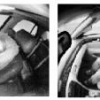Free Online Productivity Tools
i2Speak
i2Symbol
i2OCR
iTex2Img
iWeb2Print
iWeb2Shot
i2Type
iPdf2Split
iPdf2Merge
i2Bopomofo
i2Arabic
i2Style
i2Image
i2PDF
iLatex2Rtf
Sci2ools
ICPR
2004
IEEE
2004
IEEE
Large Scale Feature Selection Using Modified Random Mutation Hill Climbing
Feature selection is a critical component of many pattern recognition applications. There are two distinct mechanisms for feature selection, namely the wrapper method and the filter methods. The filter methods are generally considered inferior to the wrapper methods since the wrapper methods directly integrate the classifier to be used, and because most filter methods do not directly address feature correlation. Wrapper methods are, however, computationally more demanding than filter methods. One of the popular methods for wrapper-based feature selection is random mutation hill climbing. It performs a random search over the feature space to derive the optimal set of features. We will describe two enhancements to this algorithm, one that will improve its convergence time and the other that will allow us to bias the results towards either higher accuracy or lower feature count. We will apply the algorithm to a real-world massive-scale feature selection problem involving the image classi...
| Added | 09 Nov 2009 |
| Updated | 09 Nov 2009 |
| Type | Conference |
| Year | 2004 |
| Where | ICPR |
| Authors | Anil K. Jain, Michael E. Farmer, Shweta Bapna |
Comments (0)

